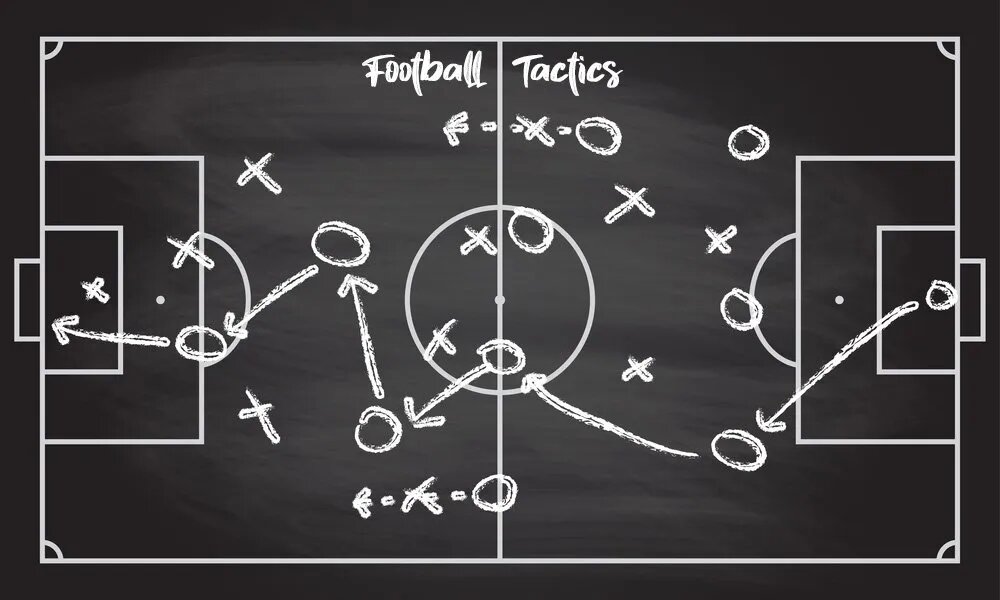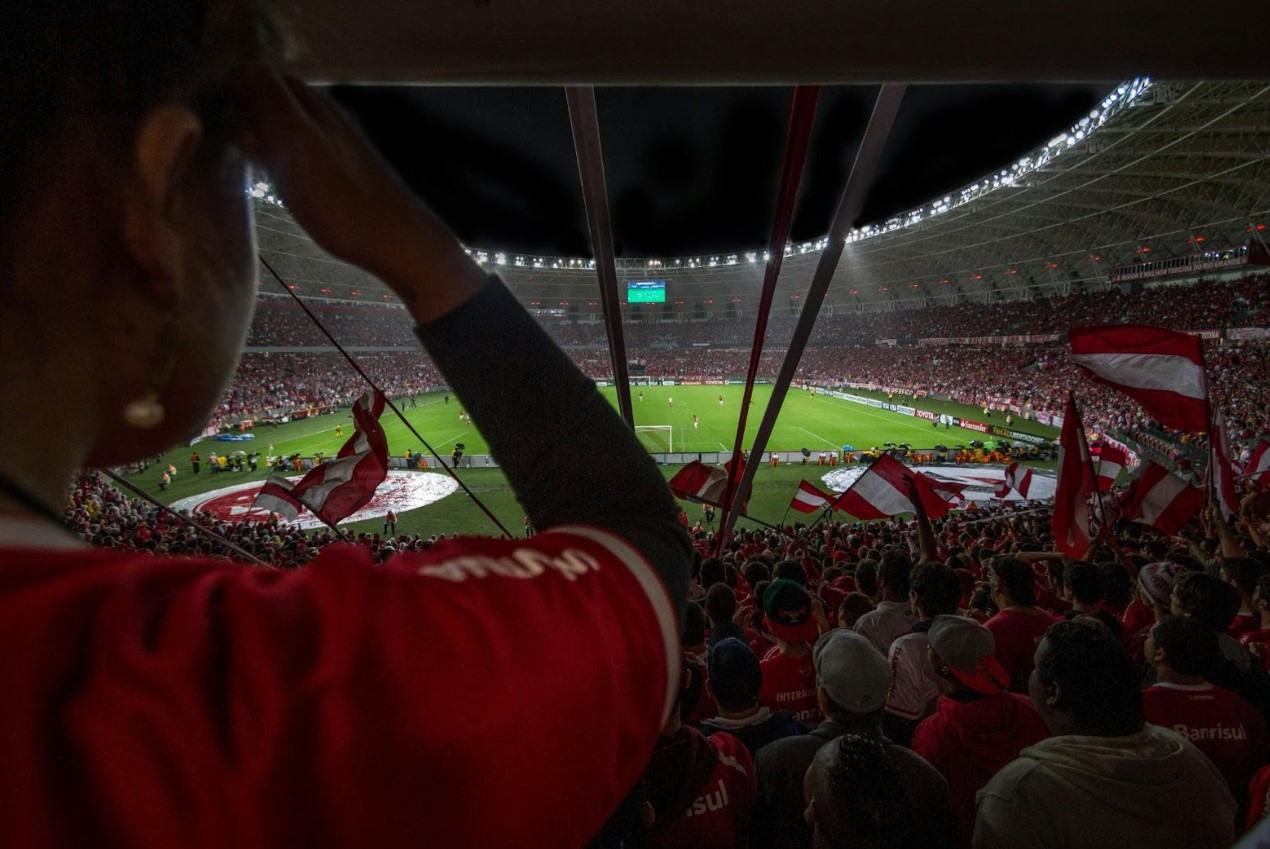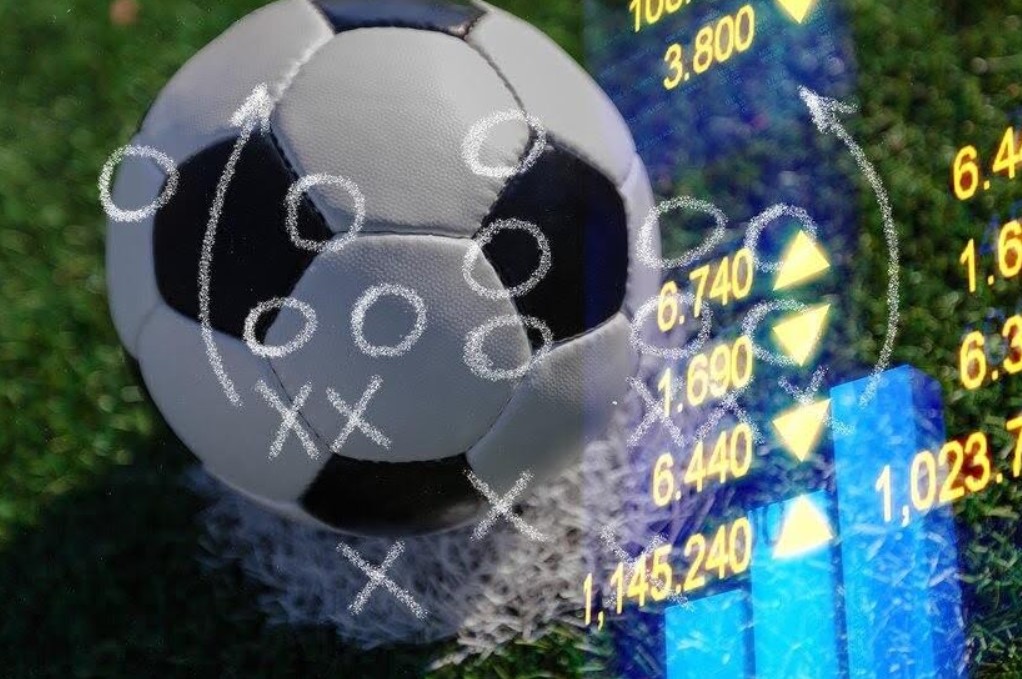The Evolution of Tactics: How Have Football Strategies Changed Over Time?
Football, often referred to as "The Beautiful Game

Football, often referred to as "The Beautiful Game," is much more than a sport of mere goals and dramatic saves; it is a strategic ballet where mind and muscle intertwine. At its core, tactics play an indispensable role, dictating the ebb and flow of matches and often determining the thin line between victory and defeat. From the early days when formations were born out of pure instinct, to today's era where data and technology intersect with human genius, the strategic facet of football has witnessed an evolution as enthralling as the game itself. This evolution is not just limited to on-pitch tactics. Off the field, platforms like Mostbet bd.com login offer fans unique insights, betting odds, and deeper dives into the game's intricacies. This article delves into the captivating journey of football strategies, shedding light on how they have morphed, adapted, and revolutionized the game over time. As we navigate through the annals of football history, we'll uncover the masterminds behind the tactics, the iconic teams that became their embodiments, and the future trajectories that might redefine our understanding of football strategy.
The Early Days and Mid 20th Century
In the dawn of organized football, tactics were more a product of instinct than the outcome of detailed analysis. Players relied on their innate understanding of the game, with positions and formations emerging as natural responses to the gameplay.
- The Classic 2-3-5 'Pyramid' Formation: The most prevalent formation in the early days was the 2-3-5, affectionately termed the 'Pyramid'. It consisted of two defenders, three midfielders, and five forwards. This heavy tilt towards attacking play was reflective of the times, where the emphasis was primarily on scoring goals rather than nuanced strategic play.
- Direct and Physical Play: Without the intricate strategies and sophisticated trainings of today, the game was characteristically more direct. Teams primarily focused on getting the ball from one end to the other as quickly as possible, leveraging the physical prowess of their forwards. This direct approach often led to a more rugged and robust style of play, with physical duels and challenges being a hallmark.
- Beginnings of Positional Play: Even in its nascency, there were inklings of what would become fundamental to football – the importance of positions. While the formations were straightforward, players began to recognize the significance of holding positions, creating spaces, and exploiting gaps in the opposition's defense.
- Influence of Ground and Ball: It's essential to note that the early tactics were also influenced by the nature of the football grounds and the ball itself. Muddy, uneven pitches made dribbling a challenge, pushing players to opt for longer, more direct passes. The heavy leather balls, often difficult to control, further reinforced this style of play.
- Pioneering Clubs and Managers: Clubs like Preston North End, who went unbeaten in the inaugural English Football League season in 1888-89, exemplified the dominant tactics of the time. As football began to spread its roots across countries, a few visionary managers and players started to see the game as more than just direct play, sowing the seeds for the tactical evolutions that the future would bring.
In conclusion, the early days of football, though simple in its strategic approach, laid the foundational stones for the tactical revolutions to come. The inherent simplicity and directness of this era are not just historical footnotes but integral chapters in the grand narrative of football's tactical evolution.
Mid 20th Century
As football entered the mid 20th century, it began shedding the cloak of its direct and straightforward past. This era marked a period of significant transformation, where tactics started to become more nuanced, versatile, and systematically organized. The influences from different footballing cultures and the rise of legendary managers became catalysts for this evolution.
- Introduction of the 4-4-2: A major tactical shift emerged with the adoption of the 4-4-2 formation. Moving away from the attack-heavy 2-3-5, this system introduced a balance between defense and offense, with four defenders, four midfielders, and two forwards. The formation was adaptive, allowing teams to shift between defensive solidity and offensive prowess with ease.
- Catenaccio and the Rise of Defensive Mastery: Italy, in the 1960s, became the epicenter of a defensive revolution with the popularization of 'Catenaccio'. Translated as 'door-bolt', this system emphasized a strong defensive line, often with a libero or sweeper cleaning up behind man-marking defenders. The primary objective was to nullify opposition attacks and then exploit the counter-attack, using the pace and precision of forwards.
- Total Football and Fluid Dynamics: In stark contrast to the rigid lines of Catenaccio, the Dutch introduced 'Total Football' under the aegis of Rinus Michels and exemplified by players like Johan Cruyff. This system was rooted in fluidity, where players were versatile enough to switch positions seamlessly, creating overloads, disorienting the opposition, and maintaining ball possession.
- The Libero's Last Stand: The role of the libero or sweeper underwent evolution during this period. Positioned behind the line of defense, the libero had the freedom to move across the pitch, join the attack, and transition back to thwart opposing threats. This role, though eventually phased out with the advent of zonal marking and pressing systems, marked an important tactical innovation of the era.
- Diverse Playstyles and International Influence: The World Cups during this era showcased the clash of various tactics, from Brazil's samba-style attacking play to England's work ethic and discipline. These international tournaments not only offered platforms for nations to exhibit their tactical prowess but also provided opportunities for cross-pollination of ideas and strategies.
In summary, the mid 20th century witnessed football metamorphosing from its early simplistic nature into a game where strategy became paramount. The dance between defense and offense, rigidity and fluidity, became more intricate, setting the stage for further tactical innovations in the decades that followed.
Late 20th Century to Modern Era

The late 20th century to the onset of the 21st marked an era of rapid globalization, technological advancements, and unparalleled access to information. As other sectors ventured into realms like Immersive Gaming in VR Esports, bringing a revolution in how we perceive digital entertainment, football, too, was not immune to these changes, witnessing a vast array of tactical evolutions and influences from across the globe.
- The Prominence of 4-3-3 and Its Variants: This period saw the widespread adoption of the 4-3-3 formation. Initially popularized in Brazil and later Europe, this system emphasized a three-man midfield that controlled the game's tempo, flanked by wingers and supported by a lone striker. It offered both defensive stability and offensive dynamism, making it a favorite for many top teams.
- Pressing Strategies Emerge: The late 20th century saw the birth and refinement of pressing strategies. Coaches like Arrigo Sacchi with AC Milan initiated high pressing, forcing opponents into errors high up the pitch. This was a significant departure from the reactive and deep-set defenses of previous eras.
- Tiki-Taka and Possession Dominance: Spain and FC Barcelona, under managers like Pep Guardiola, epitomized the 'tiki-taka' style - a tactic centered on short passing, continuous movement, and retaining possession. This approach not only became synonymous with beautiful play but also an effective strategy to dominate and disorient opponents.
- Technology and Data Analysis: With advancements in technology, teams began utilizing data analytics to gain an edge. Video analysis, player statistics, and performance metrics became integral to devising tactics, scouting opponents, and refining team performance.
- Diverse Tactics in International Arenas: The World Cups and continental tournaments of this period were melting pots of tactical diversity. Whether it was the French 'carre magique' (magic square) midfield in the 1980s, the counter-attacking brilliance of the 2004 Greek Euro-winning team, or the hybrid styles of the German 2014 World Cup winners, these competitions showcased a rich tapestry of global tactics.
- Influence of Iconic Managers: This era was marked by the rise of managerial icons who imparted their unique tactical imprints on teams - from Sir Alex Ferguson's dynamic Manchester United and José Mourinho's 'park the bus' strategy to Arsène Wenger's attacking philosophy at Arsenal. Their tactics not only brought success but also shaped the broader tactical landscape.
In essence, the period from the late 20th century to the early 21st was characterized by a fascinating confluence of traditional football cultures and modern innovations. Tactics became more diverse, intricate, and informed, leading to a football world that was richer and more global than ever before.
Modern Era
Entering the modern era, football found itself at the crossroads of tradition and innovation. The globalized world, combined with rapid technological advancements, demanded adaptability, versatility, and an ever-evolving approach to tactics. Here's a glimpse into the strategies that have defined the most recent phase of football's rich history.
- Hybrid Formations and Tactical Fluidity: Gone are the days of strictly defined formations. Teams now often switch between multiple systems within a single match. A 3-4-3 in possession might morph into a 5-4-1 without the ball. This tactical fluidity allows teams to adjust to in-game situations and exploit opposition weaknesses.
- High-Press and Transition Play: Building on the pressing strategies of the late 20th century, teams like Liverpool under Jürgen Klopp and RB Leipzig under Julian Nagelsmann have elevated the art of the 'Gegenpress' or counter-press. The aim? Win the ball back quickly after losing it, capitalizing on the momentary disorganization of the opposition.
- Positional Play and Controlled Build-Up: Following the principles of tiki-taka but with more verticality, teams are now focused on controlling spaces rather than just possession. Manchester City under Pep Guardiola exemplifies this, using possession as a tool to manipulate opposition formations and create scoring opportunities.
- Data-Driven Decisions and Performance Analytics: Advanced metrics like Expected Goals (xG) and Player Expected Assists (xA) are now standard tools for clubs. These metrics, backed by advanced tracking systems, inform tactical decisions, player signings, and in-game management.
- Tactical Diversity in Global Competitions: International tournaments continue to be a testament to tactical diversity. From the compact defenses of teams like Iceland to the intricate attacking patterns of Belgium or France, global competitions showcase the rich variety of modern tactical thought.
- The Role of the 12th Man - Fan Influence: In the age of social media and instant communication, fan opinion and sentiment have taken a front seat. Managers and teams, while not always swayed, are more aware of the '12th man' and their tactical desires, sometimes influencing game-day decisions.
- Future Directions and Innovations: With augmented reality, virtual reality, and AI-powered analytics on the horizon, the tactical aspect of football is poised for further evolution. How managers and teams harness these tools will shape the tactics of tomorrow.
To sum up, the modern era of football is one of dynamism and rapid evolution, with tactics being reshaped by both the roots of football tradition and the winds of technological change. As the game moves forward, it promises a future where strategies will continue to be as enthralling and integral as the players who bring them to life on the pitch.
Conclusion
The journey of football's tactical evolution is a testament to the game's dynamism, resilience, and ability to adapt. From the simplicity and directness of its early days, through the emergence of defensive solidity and fluidity in the mid 20th century, to the diverse and technologically-driven tactics of the recent past and present, football's strategies have been a mirror to societal changes, technological advancements, and the unending quest for competitive edge. Each era, with its unique tactics and trailblazing thinkers, has left an indelible mark, contributing to the rich tapestry of the game we adore today.
As we stand on the cusp of further innovations in training, analytics, and technology, one can only anticipate with bated breath the next chapter in this enthralling tactical saga. Yet, amidst this ever-changing landscape, one constant remains: the sheer beauty and unpredictability of football, where, despite all strategies and plans, the unexpected can and often does happen, reminding us of the magic that keeps us forever enthralled.







